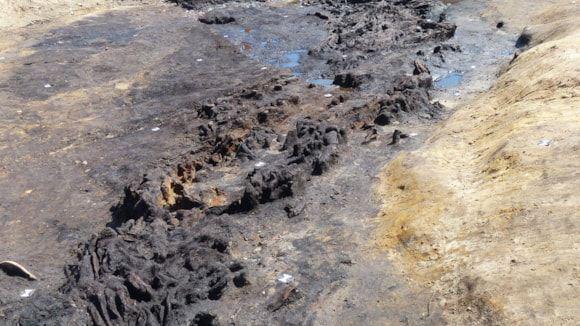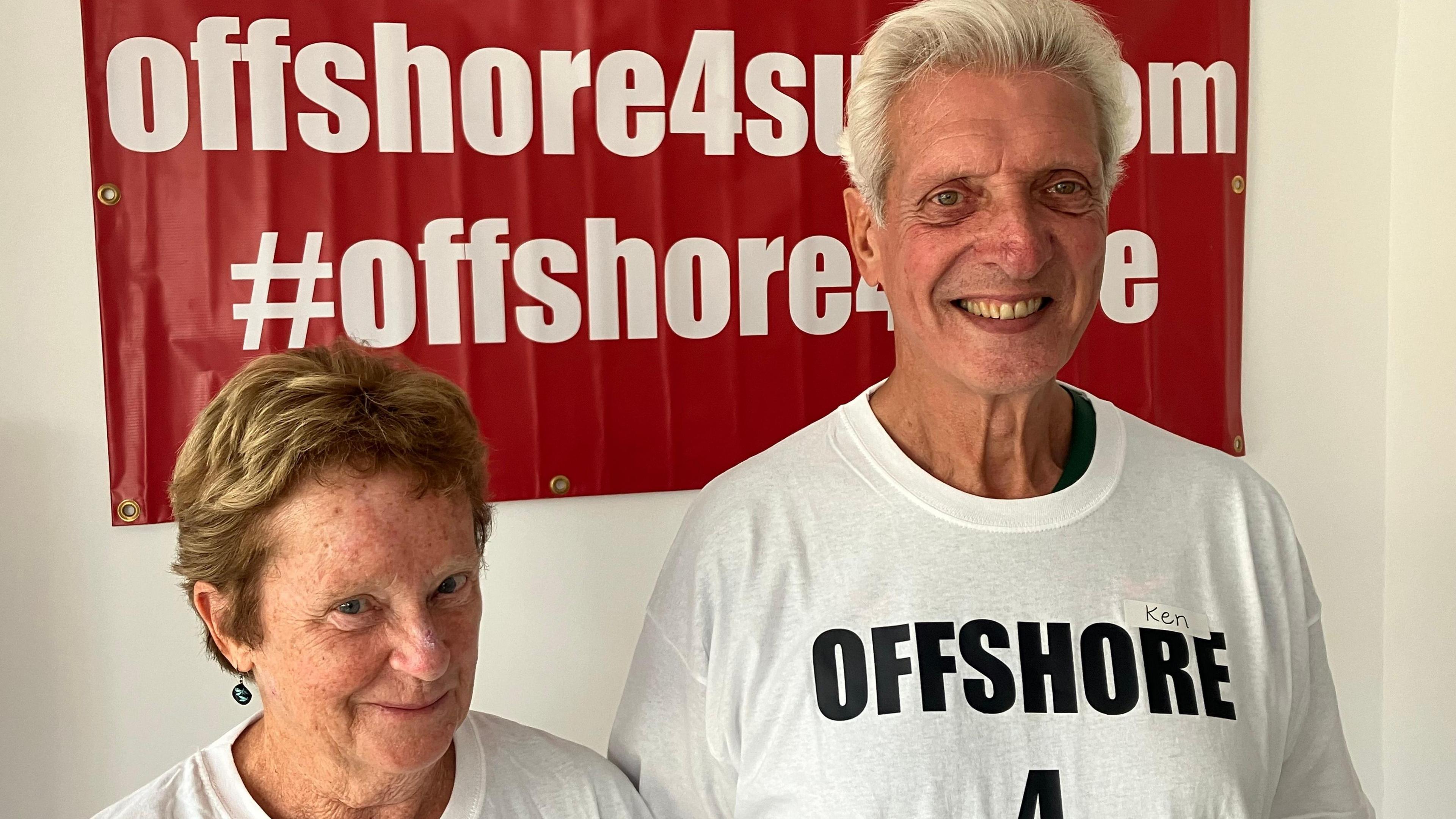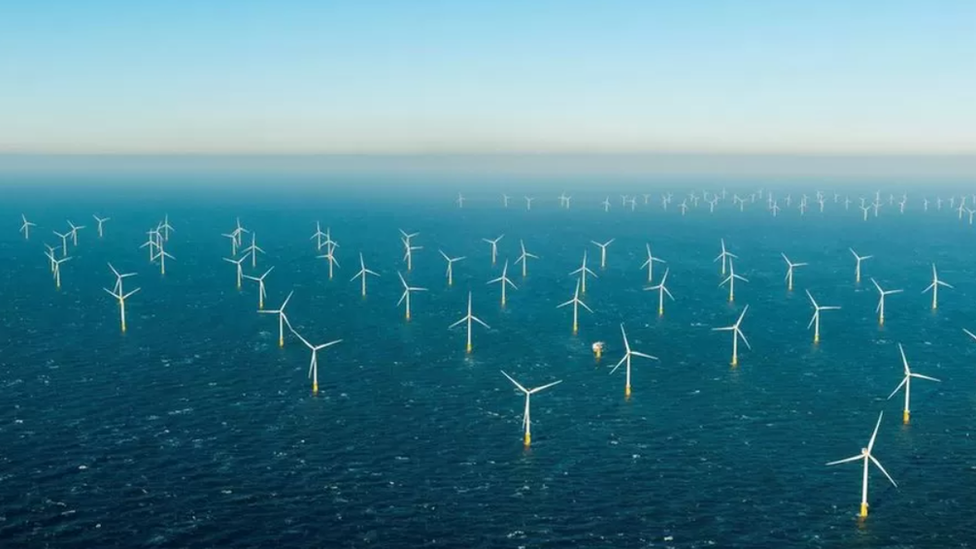Archaeological digs to start along energy hub route

Campaigner Fiona Gilmore hoped the archaeological works would give the government more time "to take stock, pause and look at alternative solutions"
- Published
Campaigners welcomed the start of archaeological works along a proposed cable route of nearly 10km (6.2 miles) linking windfarms to energy infrastructure projects.
The group Offshore4sure, which has battled to keep the projects offshore, said the excavations could reveal important historical finds between Thorpeness and Friston in Suffolk.
It hoped the works, which would be in operation for more than a year, would give the government time to "have a rethink about better offshore solutions".
In 2018, archaeologists at Woodbridge unearthed a "phenomenal" Neolithic henge along the cable route for a £2.5bn wind farm and Scottish Power said at the time it would alter the route as a result.

The Neolithic walkway uncovered at Woodbridge during the archaeological works for the East Anglia ONE windfarm in 2018
Onshore archaeological works are set to get underway in October for Scottish Power's East Anglia Two and East Anglia One North offshore windfarms.
MOLA and Wessex Archaeology will lead a team of experts on the works along a 9.7km (6 miles) corridor between Thorpeness – the cable landfall site for the projects – and the onshore substation site at Friston.
Archaeological investigations would take place until the end of 2025 as part of the early development works for the two windfarms, which Scottish Power said would "collectively generate enough green electricity to power the equivalent of more than 1.8 million homes".
It said initial research and trial excavations suggested there was potential for archaeological discoveries from both the prehistoric and medieval ages, as well as more recent periods.
Fiona Gilmore, from Offshore4sure, said: "If Scottish Power, during their archaeological surveys, were to find an Anglo-Saxon or a Neolithic or another Sutton Hoo ship then of course that would change their plans and they would have to have a rethink.
"They would then have to consider taking a different route or a deviation and we believe their current choice of routes are very foolish anyway and would destroy our countryside needlessly.
"Any delay through these archaeological surveys will also help the new government to take stock, pause and look at alternative solutions, which is something we have been calling for."
Offshore4sure said a better energy solution would "involve an offshore grid using the North Sea Corridor" with substations on brownfield sites, such as at Bradwell, in Essex.
To reduce the increase in traffic volumes in and around Friston during the excavation work, a compound would be set up in Harrow Lane, Theberton, on an old airfield runway.
Paul Monaghan, Scottish Power Renewables’ project manager, said: "The start of our onshore archaeological works is a major step for our clean energy projects and could unearth lots of significant finds for Suffolk, as we’ve seen in the past.
"We’re very mindful that we’ll be working alongside local people and communities and are taking the right approach to safely complete the works, while doing everything we can to minimise the impact on local people and communities.
"This includes the use of the old airfield, which will reduce the number of vehicle movements within the community and also takes away the need to make use of neighbouring fields.
"There will be two unavoidable short-term road closures and we apologise in advance for any inconvenience or disruption caused."
Diversions and traffic management restrictions at Harrow Lane, Theberton, will be in place from 22 October and the works are expected to take around one week.
A section of Grove Road in Friston is due to be closed temporarily for up to three weeks from 28 October.
Details of any archaeological findings will be shared with the community, with public open days planned once the works are completed to display any discovered items.
Get in touch
Do you have a story suggestion for Suffolk?
Follow Suffolk news on BBC Sounds, Facebook, external, Instagram, external and X, external.
Related topics
- Published19 September 2024

- Published6 March 2024

- Published28 June 2018
